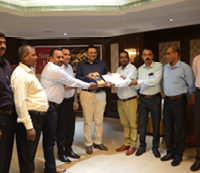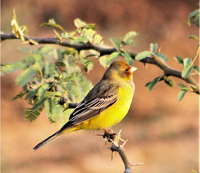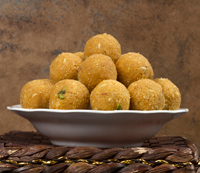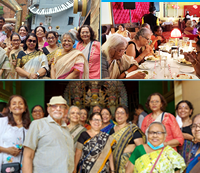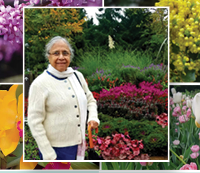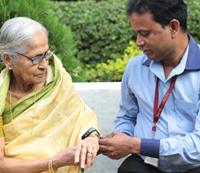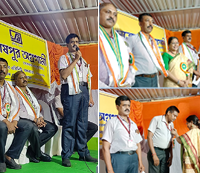DOWN MEMORY LANE
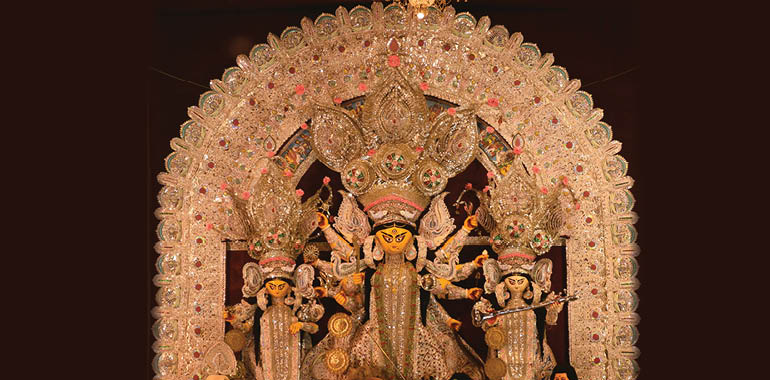
Durga puja at
Mallick Bari
Our member Ms I. Dasgupta belongs to Mallick Bari of Bhawanipur, in South Kolkata. She shares some beautiful memories of her childhood Durga pujo.I spent my childhood in a joint family that included three generations living under the same roof. Though we lived in a palatial house, like many other old aristocratic families of Kolkata in those days, our lives were no different from that of our neighbours. But during Durga Puja, the house would turn into a hub of activities.
About 600 to 700 relatives came and transformed the house for those 5 days. We had our own thakur dalan, a public courtyard with pillars and verandahs reflecting influences of European architecture. In keeping with tradition, idols were ek chala that is they were made on a single base against a single semi-circular background.
It was worth watching the artisans create the idols step by step months in advance, starting with the bamboo frame. Straws were bound over it to give it a structure. Then clay was applied on top to give the final shape to it. After drying the statue in the sun for a few days, they painted and decorated it.
On the morning of Mahalaya, the beginning of Durga’s journey to her parental abode, we would be called by our parents in the wee hours, to listen to Birendra Krishna Bhadra’s “Mahisasura Mardini” on the radio. That very day the event of chokhhu daan used to take place—the artisans drew the eyes of Ma Durga.
Shasti was the day all the idols were adorned with astras or weapons, and in the evening. with the shasti puja the festive extravaganza would formally begin. On the morning of Mahasaptami, the kala bou snan was performed. A young banana tree—marked as Ganesha’s wife, was bathed. Mahashtami, considered to be the most auspicious day, began with elaborate pushpanjali rituals, and at night the grand sandhi puja was performed, where, 108 polished brass lamps were lit, making the place glitter. Jatra (a kind of theatre) was performed after dinner on Mahanabami, by our brothers and uncles mainly, with occasional inclusion of aunts, only if there were any female roles. Dashami was the day to bid goodbye to Ma Durga. After the immersion, the whole family used to gather to have a grand dinner together. After dinner a musical programme or jalsa was arranged where the in-house skilled singers and musicians performed.
(As narrated to Support Elders by our member.)
